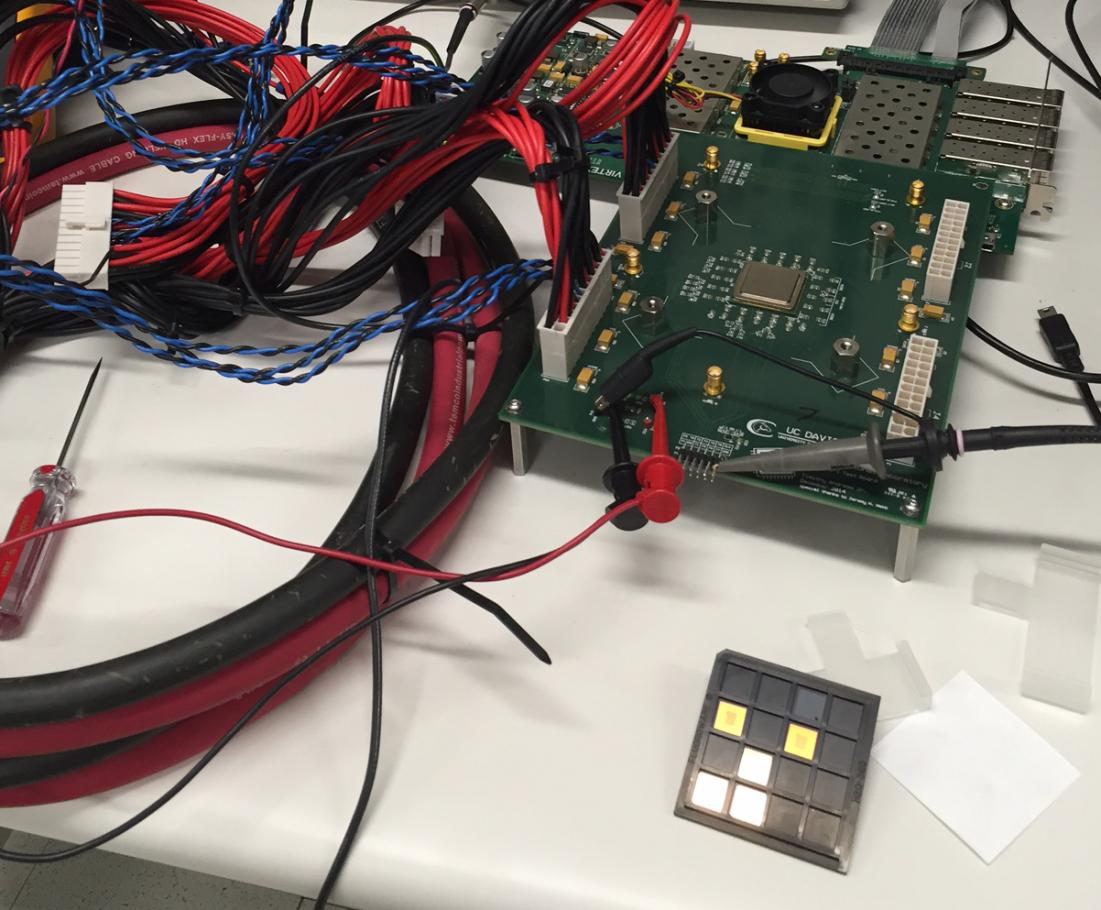A team of scientists from the
University of California has created the world's first microchip with 1,000
independent processors. Called 'KiloCore' chip, it is also claimed to be the
world's fastest chip ever designed at a university. The chip, which was
presented this week at the 2016 Symposium on VLSI Technology and Circuits, is
capable of 1.78 trillion instructions per second and contains 621 million
transistors. The partially Department of Defense-funded KiloCore chip was
ultimately built by IBM using existing 32 nanometer semiconductor fabrication
technology.
Unfortunately, a 1,000 core chip
isn't something that could just be plugged into the next line of MacBook Pros.
It wouldn't even really suffice as a graphics processor, where massively
parallel computation is the norm. In fact, many GPUs exceed the 1,000 cores of
the UC Davis chip, but with the caveat that the individual cores are directed
according to a central controller. The KiloCore, by contrast, is built from
completely independent cores capable of running completely independent computer
programs.
Here's all you need to know about
the chip:
- This microchip has been designed by a team at the University of California, Davis, Department of Electrical and Computer Engineering.
- KiloCore chip executes instructions more than 100 times more efficiently than a modern laptop processor.
- Each processor core can run its own small program independently of the others, which is a fundamentally more flexible approach than the Single-Instruction-Multiple-Data approaches utilized by processors such as graphics processing unit (GPU). Because each processor is independently clocked, it can shut itself down to further save energy when not needed.
- The chip has been fabricated by IBM using its 32nm CMOS technology. KiloCore's each processor core can run its own small program independently of the others.
- Cores operate at an average maximum clock frequency of 1.78 GHz, and they transfer data directly to each other rather than using a pooled memory area that can become a bottleneck for data.
The independence of the cores
makes the KiloCore chip a multiple instruction multiple data (MIMD) computer.
This is in contrast to the more typical single instruction multiple data (SIMD)
variety of parallel computation, as would be expected in a graphics processor.
A SIMD machine's version of parallelism is to implement the same single operation
across many different cores - that is, do the same thing to many different
units of data. This is the norm in image processing, for example, where a lot
of different pixels holding different a lot of different values are all updated
in the same way. A MIMD machine can be expected to do much more complex
calculations.
Together, the 1,000 processors
can execute 115 billion instructions per second while dissipating only 0.7
Watts. As noted in a UC Davis press release, this power requirement is low
enough that it could be supplied by a single AA battery, achieving an
efficiency of around 100 times that of a normal laptop processor.
The energy savings here largely
has to do with the abandoning of the traditional system memory architecture, in
which data for multiple cores is stored in a central RAM unit. Rather than
sharing data in this way, the KiloCore chip uses a built-in networking scheme
in which data is transferred directly between the different processors using
packet- and circuit-switched networking.




No comments:
Post a Comment
Please provide valuable comments and suggestions for our motivation. Feel free to write down any query if you have regarding this post.